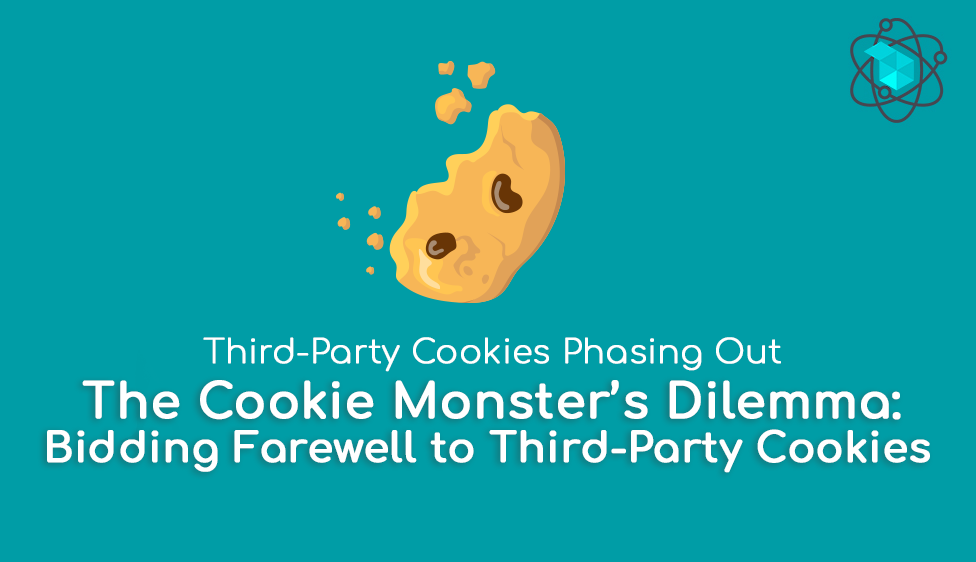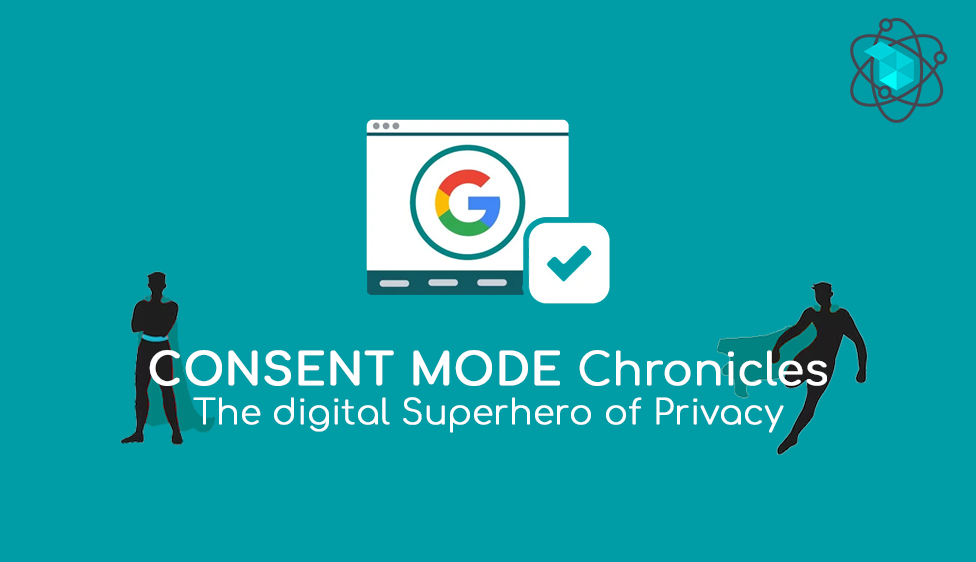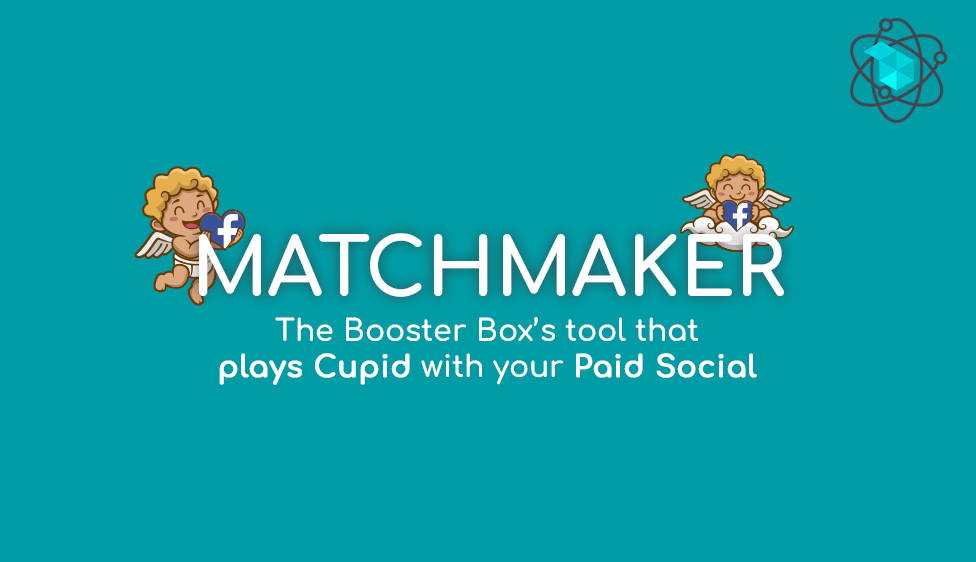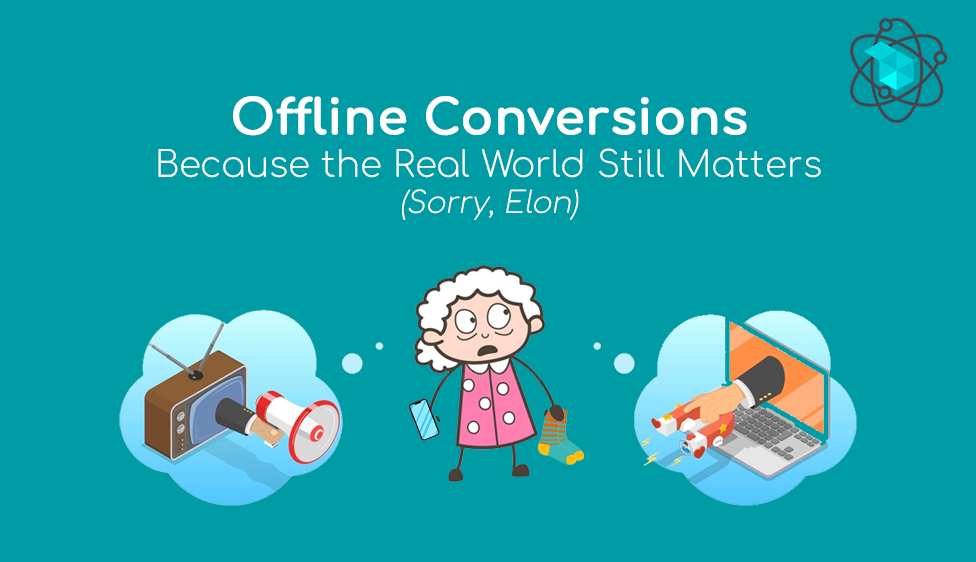
by Daniele Masiello | Sep 4, 2023 | Analytics, Performance Marketing, Tracking
Hey there, web wanderers! Welcome to a tale of cookies – not the sugary kind that grandma bakes – but those sneaky little text files known as third-party cookies. You know, the ones that follow you around the internet like a clingy ex?

In this post, we’re diving deep into the world of third-party cookies, exploring how they work, their popularity with advertisers, and why they’ve been making headlines lately. So buckle up, because we’re about to unravel the mysteries of these digital treats!
Privacy Concerns and Regulatory Actions
Yikes! The privacy police are on the hunt for our beloved cookies. Third-party cookies have been raising eyebrows due to some not-so-sweet antics. Imagine this – data breaches, misuse of information, and more drama than a reality TV show! No wonder people are concerned about their online privacy.
These little cookies, created and managed by domains other than the one you’re visiting, enable cross-site tracking, gathering data for various purposes like advertising, analytics, and personalised content delivery. Sounds convenient, right? Not for the privacy-conscious users who feel like their every move is being monitored without consent or knowledge.
But wait, there’s more! Data protection regulations have stepped up their game, with countries and regions like the EU introducing GDPR, a strict set of rules for obtaining user consent and safeguarding personal data. As a result, advertisers and tech giants have been under the microscope, prompting discussions about the ethics of data collection and sharing.

Browser Changes and Industry Evolution
Major browsers have decided they’ve had enough of third-party cookies crashing their party. Safari and Firefox already took steps to limit or block them, and now Google Chrome is joining the club. It’s like a dance-off between privacy buffs and advertising aficionados – who will take the crown on the digital dance floor?
The ad tech industry is doing the cha-cha slide to keep up with these changes. Balancing targeted advertising with user privacy has become a real challenge. It’s like trying to dance to two different rhythms at once!
Competing business interests are at play too. Advertisers who rely heavily on third-party cookies aren’t thrilled about these changes, whilst tech companies advocating for more privacy-focused measures cheer from the sidelines. Finding a middle ground that satisfies both parties is like trying to find the perfect dance partner – a tough nut to crack.
Google’s Phasing Out Approach
Drumroll, please! Google is taking the lead in the “Sayonara, Third-Party Cookies” parade. As the most widely used web browser, Chrome faced pressure to address privacy concerns and stay competitive in the browser market. After all, maintaining user trust is essential for the long-term success of its products and services.
So, what’s Google’s game plan? They’re introducing the Privacy Sandbox initiative, the cool kid on the block with an alternative plan. The Sandbox aims to provide privacy-preserving mechanisms for online advertising that still allow for effective targeting and measurement without relying on third-party cookies. It’s like offering healthier snacks without compromising on taste!
But hey, it might not be all bad news. Phasing out third-party cookies can lead to a more streamlined and faster browsing experience. Without the need to process and share extensive third-party tracking data, web pages may load more quickly, benefiting both users and website owners. It’s like cutting the calories without sacrificing the flavour!

Timeline and Expected Impact
Alright, when will we officially bid adieu to these cookies? Time to mark those calendars! Google plans for a gradual phase-out, starting with migrating 1% of Chrome users to Privacy Sandbox and disabling third-party cookies for them early next year. The total deprecation of third-party cookies is on track for the second half of 2024.
For Chrome 115 (released in July), Google is making Privacy Sandbox’s relevance and measurement APIs available to all Chrome users. They want developers to test these APIs with live traffic and provide feedback. It’s like inviting everyone to the party and testing the new dance moves!
But, what’s the expected impact? The removal of third-party cookies will have significant implications for advertisers. Third-party cookies have been a fundamental tool for tracking and targeting users across the web, and their phasing out will require advertisers to adapt their strategies and adopt new approaches to reach their target audience.
So, farewell, third-party cookies!
We’ll remember the good times and the controversies. As the cookie crumbles, advertisers need to put on their thinking caps and adapt to the cookie-less world. But fear not, dear marketers! By staying flexible, being innovative, and putting users first, we can overcome any challenge.
The post-third-party cookies era is an adventure waiting to be embraced. As the digital landscape evolves, we’ll discover new ways to make the most out of the delicious data that first-party cookies have to offer. So, let’s bake some fresh strategies, dance to the rhythm of change, and make the internet a better place for everyone – with or without cookies!

by Daniele Masiello | Jul 20, 2023 | Analytics, Tracking
From the Wild West of Data to the GDPR Revolution
Once upon a time, in the wild west of the internet, data roamed free like untamed stallions. Businesses revealed this treasure trove of information, but for users, it felt more like a chaotic mess. Then, a saviour emerged: GDPR.

With its implementation in Europe in 2018, it took a stand, safeguarding users’ interests on the web. GDPR, short for General Data Protection Regulation, demanded explicit consent – no more sneaky data gathering without permission. The rise of GDPR brought about a new era of awareness, turning users into vigilant guardians of their personal information. The digital landscape shifted, and businesses faced challenges in collecting data ethically when the era of user empowerment arrived.
It had been observed that, with the liberty to decide, a staggering 70% of users opted to decline consent. Alas, this reality translated into a whopping 70% loss of data for businesses. Also, GDPR demanded transparency and simplicity – users should be free to change their minds at any time. This meant no more cunning workarounds, and businesses had to adapt to the paradigm shift.
The Cookie Categories Tango and the Lost Data Tango
Ah, the cookie categories tango! When users click “accept,” they unwittingly participate in this dance, granting consent to specific types of cookies. Functional, strictly necessary, advertising, and remarketing cookies all vie for the users’ attention.
But the reality check comes when businesses respect user autonomy, and that delightful freedom translates into a 70% data loss. Imagine a business gathering data with a butterfly net, only to find most of the butterflies have flown away. It’s a data exodus! The GDPR sheriff asks businesses to play fair, which means no data tracking without consent. Alas, this leads to the haunting absence of crucial data on conversions, user profiling, and more.
However, the silver lining is that this dance of consent actually promotes transparency and trust between businesses and their users. It sets a stage where users know exactly what data they are sharing and how it will be used. By giving users control over their data, businesses demonstrate their commitment to respecting privacy, creating a foundation for strong and long-lasting relationships.
Enter Consent Mode, the Digital Superhero

But fear not, for Consent Mode emerges like a masked hero to save the day! With its trusty sidekick, Google Tag Manager, Consent Mode ensures compliance while keeping data flowing. Here’s the magic – when a user lands on a website, a discreet “ping” is sent to Google Analytics, signalling that consent status is yet unknown.
Like a secret handshake, this ping yields invaluable data for businesses. Consent Mode works its enchantment, allowing us to recover up to 30-40% of data, salvaging vital insights that would otherwise be lost.
Now, this magical recovery of data through Consent Mode’s ping opens up new possibilities for businesses. They can still understand user behaviour and engagement on their websites, even when full consent is not given. This means businesses can fine-tune their marketing strategies, optimise user experiences, and gain valuable insights to make better-informed decisions.
CMPs – The Gatekeepers of Consent
Ah, CMPs – the unsung guardians of consent! Consent Management Platforms, in their own mysterious ways, categorise cookies and ensure compliance. Like diligent librarians, they organise the data library, so every cookie finds its rightful place.
But behold dear reader, each CMP is a unique snowflake with its own rules. No standard cookie-cutter solution here! With no detailed manual in sight, technical prowess is required to navigate this labyrinthine landscape.
CMPs act as an intermediary between users and businesses, providing the consent banners that users encounter when they visit a website. They are instrumental in helping users understand the implications of their consent choices. For businesses, CMPs are valuable allies, simplifying the process of collecting and managing user consent, and ensuring compliance with GDPR’s stringent requirements.
The Duality of Compliance and Data Insights
Now, why should businesses care about this digital dance of consent? Oh, dear reader, the stakes are high! Compliance and safeguarding user interests are paramount, but so is the pursuit of data-driven decisions. A treasure trove of data empowers businesses to make informed choices, charting their course through the turbulent sea of the market.
As businesses adapt to the GDPR-driven landscape, they discover that transparency and consent-driven data collection lay the foundation for trust and loyalty. By respecting user preferences, businesses build a loyal customer base, while also meeting the strict requirements of data privacy regulations.
Embrace Technical Expertise

But alas, Consent Mode’s path is not paved with roses. The journey demands technical expertise, as each CMP presents a unique challenge. Fear not, for at Booster Box we revel in this intricate dance. Our technical prowess is unparalleled, as we shimmy and shake our way through the CMP maze, customising Consent Mode to fit each client’s needs.
No hiding, sorry: our top-notch skills make us stand out. We promise to recover the wealth of data that would be lost without Consent Mode, leaving everybody in awe of our digital wizardry.
The Grand Finale
In the grand finale of our Consent Mode Chronicles, we bid adieu to this enthralling tale. With GDPR as the guiding light and Consent Mode as the enigmatic hero, the dance of privacy and data insights continues.
As you venture forth, dear reader, remember to protect your users’ interests, embrace the power of consent, and savour the delights of informed decision-making.

by Daniele Masiello | Jun 30, 2023 | Analytics
Yo ho, yo ho, fellow digital adventurers! The time has come to say goodbye to Universal Analytics (UA) as it sets sail into the sunset. But don’t fret, for a new and improved vessel named Google Analytics 4 (GA4) awaits us. Before you embark on this exciting new voyage, whether you haven’t prepared yet (well mate, no pressure, but… it might be time to hurry up) or if you think you are prepared but want to double check, let’s make sure you’ve packed all the essentials.
Here are six critical points to check off before the UA ship sinks!

1) Is your new GA4 property shipshape and recording your key conversions?
Arr, mate! Did you use Google’s auto-migrate function to transfer your precious data to GA4? Whatever the answer is, you might want to make sure your main goals are properly recorded in the new property and, more importantly, switched on as conversions. You wouldn’t want your valuable data to be lost at sea. So, ensure those goals are set to “captain”, and let GA4’s conversion reports and Google Ads integration hoist your revenue sails!
2) Have you connected your Google Ads account to set sail with GA4?
Don’t be left stranded on a deserted island! Connect your Google Ads account to your new GA4 property to enjoy the benefits of seamless integration. Import GA4 conversions into your Google Ads account and watch your advertising campaigns navigate the vast digital oceans. Feast your eyes on Google Ads data in your GA4 reports and discover new horizons with GA4 audiences, which are more customisable than a peg-legged pirate. But beware, without “Google Signals” turned on, you might end up shouting “Yo ho, yo ho!” to an empty sea.
3) Prepare for a long voyage with data retention
As seasoned sailors, we know the value of keeping records. Set your GA4 data retention to the maximum allowed (14 months for free accounts or 50 months for 360 accounts). But why stop there? Connect your GA4 to a BigQuery project and export your data daily, ensuring it’s safely stored for as long as your heart desires. Let your data be the guiding star on your analytics voyage, helping you navigate through stormy seas and charting the course to success.
Want some pairs of extra eyes on your GA4 Migration? Get free GA4 audit NOW
4) Beware of the Bermuda Triangle of misassigned traffic and conversions, caused by payment domains
Pay attention, vessel captain! Add all relevant payment domains, such as PayPal and Stripe, to the referral exclusion list in your GA4 property. Failing to do so would be like steering your ship straight into the treacherous Bermuda Triangle. GA4 might misattribute traffic and conversions, giving credit to the referral channel when it should be applied to another channel like Paid Search. Don’t let your treasure fall into the wrong hands! Keep a watchful eye on your attribution and sail smoothly towards accurate analytics.
5) Migrate your trusty UA audiences to GA4
Just like loyal shipmates, your UA audiences have served you well. If you’ve been using them for targeting in Google Ads or segmenting reports in UA, it’s time to create new GA4 replicate audiences. Give your loyal crew a new home in GA4, allowing them to continue guiding your advertising adventures. With GA4’s advanced audience features, you’ll navigate uncharted territories and discover hidden treasure troves of customer insights.
6) Set sail towards GA4 optimisation!
Arriving safely at GA4 is just the beginning. Now it’s time to hoist the sails and optimise your GA4 property for a remarkable experience. Fine-tune your data collection settings to ensure smooth sailing and avoid getting caught in the windless waters of data gaps. Craft custom reports that unveil buried analytics treasures, and set up alerts to warn you of any unexpected storms on the horizon. GA4 offers endless possibilities to harness the power of your web data. Don’t be afraid to explore and unlock GA4’s true potential.
Still need to make sure your data ship is iceberg-safe? Ask our Analytics experts NOW
Yo ho again, fellow data sailors! The UA ship is setting sail for its final voyage, but GA4 is here to lead us into the future of analytics. By checking off these six critical points, you’ll be well-prepared to navigate the stormy seas and unleash the full power of GA4. So, hands on the wheel, adjust your captain’s hat, and set course for analytics greatness.
Bon voyage, and may the data winds be ever in your favour!


by Daniele Masiello | Jun 8, 2023 | Facebook, Paid Social, Performance Marketing
Ah, love! It’s a mysterious, enchanting force that can make our hearts skip a beat. But what if we told you that we’ve found a Matchmaker that can bring together not hearts, but rather audiences? Yes, you heard it right! At Booster Box, we’ve crafted a tool called “Matchmaker” that plays Cupid with your social media campaigns.

But before we dive into the depths of this love story, let’s set the stage with a little background.
The Battle of the Broad Audiences
Well, casting a wide net doesn’t always result in the best catch.
The world of online advertising is a battlefield, and in this epic clash of algorithms and advertisers, a fierce war is being waged for the attention of users. At the helm of this battleground stands the all-powerful Meta (formerly known as Facebook), a force to be reckoned with, armed with its sophisticated algorithms and vast user base. But alas, even giants have their weaknesses, and in this case, it’s their soft spot for broad audiences.
Meta’s algorithms tend to favour broad audience targeting, encouraging advertisers to reach as many users as possible. It’s as if they believe that the more small fish they catch, the higher the chances of finding the lunker – relevant users. And who can blame them? After all, when Meta suggests these broad audiences during campaign creation, it’s like a siren’s call, luring advertisers towards the promise of expansive reach and potential conversions.

But here’s the thing: while these broad audiences may initially seem enticing, they come at a cost – soaring CPMs and a lingering uncertainty about whether we’re truly reaching the users who matter most. It’s like buying a jumbo-sized bag of crisps, only to discover that most of it is air – a relatable experience, isn’t it? 😏. Oh, the dilemma!
Pleasing the Algorithm and Our Clients
The delicate art of pleasing both the algorithm and our beloved clients: it’s like trying to juggle plates of spaghetti while riding a unicycle – a feat that, as Italians, we might have some inherent talent for, but let’s face it, not everyone can pull it off! Sorry 🤷
But don’t fret! For at Booster Box, we are not only a loving and caring agency made of wonderful human beings, but also a resourceful one. In the face of this daunting juggling act, we rolled up our sleeves and set out on a mission to find a solution that would satisfy both the algorithm’s hunger for broad audiences and our clients’ desire for cost efficiency and relevant targeting.
Imagine a skilled circus performer (decked out in their finest Italian attire – of course 💃🕺), gracefully balancing plates of spaghetti on each hand, their unicycle spinning beneath them. It’s a mesmerising sight that captivates both the algorithm and our clients. And that’s exactly what the Matchmaker does – it performs a magical dance, combining the art of audience targeting with the science of algorithm whispering.
Want to combine broad audiences, relevant targeting and cost efficiency? Get in touch
Matchmaker, Matchmaker, Find Me an Audience
Booster Box’s Matchmaker is here to save the day, armed with its power of automation and time-saving abilities. It’s your own personal cupid, but instead of arrows, it shoots out precise audience recommendations. With the Matchmaker by your side, finding the perfect audience for your campaigns becomes a breeze, like discovering a match made in marketing heaven.
The Matchmaker streamlines the process of finding niche, smaller audiences with lower CPMs. It’s a personal assistant who scours the digital realm, sifting through the data to uncover hidden gems that align perfectly with your campaign goals. The Matchmaker takes the guesswork out of audience targeting, allowing you to focus on crafting captivating content and strategies.

And there’s more: Matchmaker doesn’t stop at finding audiences directly related to your initial topic. Oh no, it’s far more versatile than that. This clever tool has a knack for uncovering audiences that may not have an obvious connection but are still incredibly relevant to your target users.
Just imagine running a Matchmaker campaign focused on second-hand and sustainability themes. While exploring the depths of audience possibilities, you might stumble upon interests like Marie Kondo, Bargain Hunt, Parents of small children, and Recently Moved. It’s like discovering a treasure trove of audience segments you never even knew existed. The Matchmaker opens doors to new avenues of engagement, allowing you to connect with users who might have otherwise remained out of reach.
Say goodbye to mundane, one-size-fits-all audiences and hello to a world of diverse possibilities. Let the Matchmaker be your guide, and together, we’ll uncover audiences that are not only relevant but also have the potential to fall head over heels in love with your offerings.
Ready to find your perfect audience? Request a free assessment now
Unveiling the Wizard Behind
You’re expecting the entire magic of Matchmaker to be revealed, right? *evil laugh*

Well we won’t. And we can’t, because there’s no magic, just the hard work and blood and sweat and tears – wait, this is getting a bit too emotional – just the magnificent competency of our nerdy developers, data scientists, project managers and media operations specialists. Still, we can’t send you to bed without supper – we just said we’re loving and caring – so let’s pull back the curtain and take a peek at Matchmaker.
To embark on your Matchmaker adventure, all it takes is a simple list of keywords related to your target audience. Again, imagine you’re a client who specialises in the exciting realm of second-hand buying and selling (we have some, but any reference is purely coincidental). In this case, your keyword arsenal might include gems like “Second-hand shopping”, “Vintage shopping”, “Thrift store”, and “Used book”.
Matchmaker, poised with its digital bow, takes aim and shoots forth its arrows of algorithmic precision to generate a comprehensive set of Similar Audiences. These Similar Audiences exhibit a remarkable level of alignment with the initial concept, yet their sizes can vary significantly, ranging from a few users to millions worldwide or tens of thousands. In addition, the Matchmaker provides a curated list of Suggested Audiences, encompassing interests, behaviours, and demographics that may appeal to users interested in second-hand selling and buying, even if not directly linked.
To refine and optimise the generated audiences, our team of skilled media operations specialists takes charge. They swiftly evaluate and narrow down the initial lists to ensure relevance and an adequate scale. Moreover, the Matchmaker offers the capability to create audience clusters, enabling a comparative analysis of performance among various audience segments.
Through this meticulous screening process, we are able to identify the most fitting and substantial audiences for your campaigns. Our media ops specialists leverage their expertise to strike the perfect balance between audience specificity and reach, ensuring the delivery of impactful and cost-effective campaigns. By tailoring the final audience list, we unlock the potential to engage with users who possess a genuine interest in your offerings, maximising the effectiveness of your advertising initiatives.
Want to unlock the power of Matchmaker for your campaigns? Contact us today
Conclusion
Through our Matchmaker tool, we have revolutionised campaign efficiency by effectively engaging the desired audience while keeping Meta’s algorithm highly responsive. It’s a match made in marketing heaven! So, say goodbye to generic audiences and hello to newfound precision and cost-effectiveness. Let the Matchmaker be your digital Cupid, guiding your campaigns to success.
Remember, in this digital age, finding love is no longer confined to the realms of romance. With Booster Box’s Matchmaker, you can discover the perfect match for your social media campaigns. As the saying goes, “All you need is love” … and a clever tool to target your audience – with a dash of wit and a sprinkle of humour!

by Daniele Masiello | May 17, 2023 | Analytics, Offline Conversions, Performance Marketing
In today’s digital age, it’s easy to get caught up in the online world of advertising and analytics. But let’s not forget the impact of those pesky offline conversions – you know, the ones that happen outside of our beloved screens. Whether it’s a phone call, an in-store purchase, or even a carrier pigeon delivery (okay, maybe not that last one), these events can have a big impact on your bottom line. Offline conversions can be the missing piece of the puzzle when it comes to understanding the true value of your online marketing efforts.
So, what are offline conversions, and why do they matter? We’re here to shed some light on that and how to manage them like a pro. We’ll break down what offline conversions are and why they should be on your radar. Fear not, we’ll also get into the nitty-gritty of managing the integration of offline conversion data with your online platforms. Oh, and we’ll explain the difference between primary and secondary conversions (it’s not as complicated as it sounds).
By the end of this article, armed with the knowledge to optimise your offline conversion tracking and make data-driven decisions, you’ll drive success for your business. Plus, who knows, you might even impress Elon with your newfound appreciation for the real world (but no promises).

Defining Offline Conversions
Hold on to your seats, folks! It’s time to dive into the wild world of offline conversions. You know, those pesky events that happen outside of the digital realm – like when your grandma walks into a store and buys socks. But seriously, tracking offline conversions is no laughing matter. It’s a crucial element of any successful marketing campaign, as it helps businesses gain valuable insights and understand the true ROI of their efforts.
So, what exactly are offline conversions? Well, they can come in many shapes and sizes. From counting customers making purchases in a brick-and-mortar store, to tracking leads over the phone or email, offline conversions are any event that happens outside of your digital space. By attributing these offline conversions to specific advertising efforts, businesses gain a more comprehensive view of campaign effectiveness.
But tracking offline conversions isn’t a piece of cake. Accurately tracking and attributing offline conversions to specific advertising efforts requires using the right tools and methods. Plus, businesses must be mindful of privacy concerns when collecting and storing offline conversion data. We wouldn’t want your grandma’s personal information falling into the wrong hands!

So, the next time your grandma buys a new pair of socks, remember – it’s not just a purchase, it’s an offline conversion!
Managing Offline Conversions
If you’re like most businesses, you’re probably tracking online conversions like a hawk. But what about those sneaky offline conversions happening right under your nose? They can have a big impact on your bottom line, so managing them is essential for maximising your advertising efforts.
But let’s be real, managing offline conversions can feel like herding cats.

Different platforms have different requirements for importing offline conversion data, making the process time-consuming and error-prone. That’s where Booster Box’s custom API connector comes in, making importing offline conversions a breeze.
Our API connector lets you seamlessly upload offline conversion data, eliminating tedious manual work. And it’s not just easy to use, it’s also super accurate, so you can trust the data for making informed decisions about your advertising efforts.
But what sets our API connector apart is its ability to handle even the most complex data structures. You can upload detailed, granular data and get insights to optimise your campaigns fully. Unlike other connectors, our API gives you full control over your data, allowing you to choose the data points and how to use them to achieve your marketing goals.
The Importance of the Google Click ID
Let’s talk about the unsung hero of offline conversion tracking: the Google Click ID, or gclid for short. You may think, “Wow, what a thrilling topic!” But hear us out, because the gclid is more important than you might think.
First off, the gclid is a unique code assigned to each click on a Google ad. It’s like a secret code that follows a user around (minus the spy stuff). When someone clicks on your ad, the gclid gets stored in a cookie on their browser. If that user later converts offline, the gclid gets passed along with the conversion data. You can reload that data back into Google Ads and see which clicks resulted in offline conversions. It’s like having a superpower to see into the offline world.
But wait, there’s more! The gclid helps you measure the full impact of your Google Ads campaigns. By combining data from both online and offline conversions, you get a more complete picture of your return on investment (ROI). And who doesn’t love a good ROI?
Setting up gclid tracking can be a pain, but that’s where we come in. Partnering with Booster Box ensures your gclid tracking is set up correctly, maximising your advertising buck. So lean on us – we’ve got your back.
Time is of the Essence
Tick-tock, time is ticking, and so are your offline conversions! If you’re not monitoring the upload process closely, you might miss out on crucial information. In the words of the White Rabbit from Alice in Wonderland, “don’t be late for this very important date!”

Waiting for the upload process to complete can feel like an eternity. But fear not, because custom API connectors are here to save the day! With an API connector, you can automate the upload process and ensure accurate data. That means more time to sip your coffee and watch the magic happen.
But that’s not all! Setting up alerts to notify you of any issues is a must. You wouldn’t want to miss an opportunity to optimise your campaigns because of a technical issue, would you? So, set those alerts and be the first to know when something isn’t working as it should.
In summary, time is of the essence when managing offline conversions. With a process to report success promptly, custom API connectors to automate the upload process, and alerts to notify you of any issues, you’ll be well on your way to optimising your campaigns in no time. Now, “where did I put my pocket watch?”
Primary vs. Secondary Conversions
Oh, the age-old debate of primary vs. secondary conversions. It’s like deciding between pizza and tacos. Both are great, but they serve different purposes.
Primary conversions are the endgame, the ultimate goal of your campaign. It’s like finally finding the one or hitting the jackpot in Vegas (not that we endorse gambling). These actions bring in the big bucks, like making a purchase or submitting a lead form.
But let’s not forget about secondary conversions, the hero’s helper of the campaign. These are the little victories that support the primary conversions, like signing up for a newsletter or adding a product to a cart. Think of them as the side dishes to your main course – they complement it perfectly.
Tracking both primary and secondary conversions gives you a complete picture of your campaign’s performance. By keeping an eye on secondary conversions, you can identify opportunities to optimise towards the most valuable metrics and drive more primary conversions.
And don’t forget, tracking secondary conversions can help you upsell or cross-sell to existing customers. If a customer signs up for your newsletter, it’s a sign they’re interested in what you have to offer.
So there you have it, folks. Primary vs. secondary conversions – they’re both winners in our book.
Wrapping Up
Time flies when you’re tracking offline conversions!

In conclusion, to manage offline conversions effectively, you’ll need to get technical, but don’t worry, we’ve got this! We can ensure a seamless and accurate import process with our custom API connectors. Tracking both primary and secondary conversions is key to comprehending campaign performance. Remember, don’t put all your eggs in one basket!
And if you want to know more, just contact us and free yourself from all this fuss. But wait, there’s more! Keep your eyes peeled for our upcoming blog post, where we’ll dive even deeper into advanced techniques like CLTV, Depth Funnel Value, Lead Scoring, MOAS, and value-based optimization approaches. It’s going to be epic!
So keep on tracking those offline conversions, and don’t forget to check out our upcoming post. We’ll be linking all of this to first-party data too, so you don’t want to miss out!






















